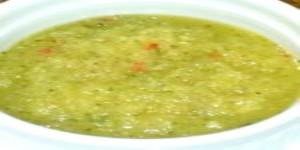
Scope
The word “chutney” is derived from the Tamil word catni meaning to eat with appetite. In India, “chutney” refers to fresh and pickled preparations. Several Indian languages use the word for fresh preparations only. In Tamil Nadu, thogayal or thuvayal (Tamil) are chutneys with a pasty consistency. In Andhra Pradesh it is called roti pacchadi. In Telangana the same is tokku.
Quite a few vegetables and plants have medicinal values, as per Ayurveda. These are made into chutneys and served as dips with main courses such as dosas, idlis, etc. For e.g. Pirandai Thuvayal or ridged gourd chutney (Peerkangai Thuvayal or beerakaaya tokku). Bitter gourd, a vegetable high in medicinal value, especially for diabetes, is made palatable by serving it as a chutney as a side dish in meals. Another popular chutney, particularly in the states of Andhra Pradesh and Telangana is the gongura leaves chutney.
Occasionally, chutneys that contrast in taste and colour are served together—a favourite combination being a green mint and chili chutney with a contrasting sweet brown tamarind and date chutney served with widely popular Indian snacks called chaat.
Scope
In South India, especially in the state of Tamil Nadu, Andhra Pradesh, Karnataka and Telangana, besides the wet chutneys, there are a wide range of chutneys ground into powders. Popularly called Podi, meaning powder, they use a combination of roasted lentils, sesame seeds, peanuts, dried coconut, red chillies, curry leaves, etc. Podis make a great relish for popular South Indian snacks dosa, idli, adai, etc.
Fundamental Concepts and Principles
Basic ingredients in a chutney include roasted gram cumin seeds, fresh coconut, a souring agent like tamarind and salt all of which are stone ground to a coarse or fine paste. However, a variety of spices and herbs can be added to make a lip smacking array of chutneys. Spices commonly used in chutneys include fenugreek, coriander, and asafoetida (hing). Other prominent ingredients and combinations include cilantro, capsicum, mint (coriander and mint chutneys are hara or green chutney).
Some varieties of chutneys include tamarind or Imli (meethi or sweet chutney) sooth (or saunth, made with dates and ginger), coconut, onion, prune, tomato, red chili, green chili, mango, lime, coconut, peanut, dahi, green tomato, dhaniya pudina (cilantro and mint), peanut (shengdana chutney in Marathi), ginger, dahi (yogurt), red chili powder, tomato onion chutney, cilantro, mint coconut chutney, etc.
https://en.wikipedia.org/wiki/Chutney – refer to the long and wide variety of Chutneys across various regions of India
Fundamental Concepts and Principles
Following ingredients are required for making Mango Chutney :
- Mangoes – 4 and ½ palam
- Sesame oil/Til oil – ½ palam
- Fenugreek/methi seeds – 1/8 palam
- Mustard seeds – 3/8 palam
- Red chillies – 3/8
- Salt – 5/8
Method
Chutneys are ground with a mortar and pestle or an ammikkal (Tamil). Spices are added and ground, usually in a particular order; the wet paste thus made is sautéed in vegetable oil, usually gingelly (sesame) or peanut oil. These days, electric blenders or food processors are used as labor- saving alternatives to stone grinding. However, to truly bring out flavors of spices, herbs, and other such ingredients, stone grinding is the best. All recipes in the Bhaga Shastra only recommend stone
grinding or pounding (where possible).
Method
- Scrape out the skin of mangoes, cut it into small pieces and throw the seeds away. Heat sesame oil in a pan and add fenugreek or methi seeds and mustard. Put the fenugreek first in the heated oil and when it becomes brown, add the mustard. When the mustard stops spluttering, remove from the fire and set aside.
- Fry red chillies in sesame oil and put it in the grinder. Put salt in the chillies and the cut mangoes in it. Pound it well until all the ingredients are powdered. Then add the fenugreek and mustard in the pan and pound it again. This chutney will last for one week or so.
Hindu Compliance Body
The Hindu compliance body was established under the executive order of The Supreme Pontiff of Hinduism, dated August 14, 2020, order number 10010, under the title Reviving the Hindu Compliance System and Body
to create, promote, spread and teach the standard procedures for all products and services that are in compliance Hindu Shastras.
Copyright
HCS has the copyright of all its publications. No part of these publications may be reproduced in any form without the prior permission in writing to HCS. This does not preclude the free use, in the course of implementing standard, of necessary details mentioned above. Enquiries related to copyrights to be addressed to KAILASA.
